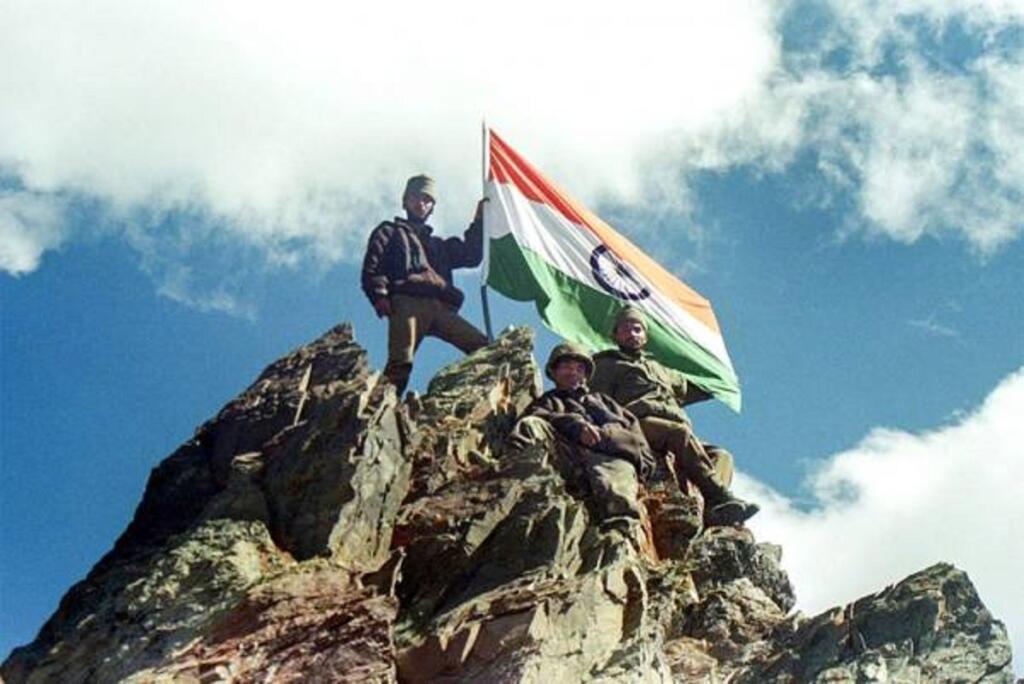The India-Pakistan Kargil War in 1999 was a significant military conflict. It started when Pakistani troops, under General Pervez Musharraf’s orders, occupied Indian posts in the Kargil district of Jammu and Kashmir. These posts were usually vacated during winter and reoccupied in the summer. Pakistan aimed to dominate the Srinagar-Kargil Highway, thereby cutting off the vital road link to Ladakh. This led to a fierce and strategic military engagement.
Initial Challenges and Response
India was surprised by the sudden infiltration. The Pakistani Army’s plan was to infiltrate and control key high-altitude positions, which would give them a strategic advantage. Indian intelligence had failed to detect these movements. However, once the situation was clear, the Indian military responded with great determination. Indian soldiers displayed immense bravery, reclaiming the occupied posts through a series of arduous operations.
Air Force Involvement
The Indian Air Force (IAF) played a crucial role in the Kargil War. On May 25, 1999, the Cabinet Committee on Security (CCS) approved full-scale air operations, termed ‘Operation Safed Sagar.’ The IAF supported ground troops by targeting enemy positions. Initially, the IAF faced significant losses, such as the MiG-27 and MiG-21 aircraft being shot down. These setbacks prompted a change in strategy. The IAF shifted to high-altitude bombing and deployed Mirage 2000 aircraft with laser-guided bombs.
Precision Bombing: Turning the Tide
Bombing from high altitudes required ingenuity. The IAF had to modify aircraft and aiming systems to hit targets accurately at 16,000 to 18,000 feet. Precision bombing of enemy bunkers, gun positions, and logistics camps, notably at Muntho Dhalo, Tiger Hill, and Point 4388 in the Dras Sector, proved effective. This precision bombing was a game-changer, hastening the recapture of strategic peaks and reducing Indian Army casualties.
The Kargil War offered several lessons for future military engagements:
The war highlighted the need for better inter-agency coordination. The lack of communication between the Research and Analysis Wing (RAW), Intelligence Bureau (IB), and military intelligence was evident. Post-war, a full-time National Security Advisor (NSA) was appointed, and new intelligence agencies like the National Technical Research Organisation (NTRO) and Defence Intelligence Agency (DIA) were established.
Enhanced Surveillance and Technology
Aerial surveillance using Indian RISAT satellites and UAVs was improved. The Defence Acquisition Council, Nuclear Command Authority, and Strategic Forces Command were established to streamline military operations. Additionally, the Integrated Defence Staff (IDS) and the Andaman and Nicobar Command were set up to enhance operational efficiency.
Air Force Upgrades
Post-Kargil, the IAF underwent significant upgrades. The co-development of the Sukhoi Su-30 MKI fighters with Russia, and the upgrading of Jaguars, MiG-29, and Mirage 2000 aircraft with the latest weapons and avionics, were critical steps. The induction of two squadrons of Light Combat Aircraft and the acquisition of 36 Rafale fighters further bolstered the IAF’s capabilities.
Advanced Equipment and Infrastructure
The IAF also increased its transport aircraft capacity with Boeing C-17 Globemaster III, Lockheed C-130J, and Airbus C-295W. The helicopter fleet was enhanced with Boeing Chinook and Apache helicopters, along with various ALH variants, including the Light Combat Helicopter. New missile systems like BrahMos and the S-400 air defense system were added. Upgrades in infrastructure included operational airfields in Ladakh and the North East, additional hardened shelters, and advanced landing grounds.
The Growing Chinese Threat
The People’s Liberation Army Air Force (PLAAF) of China has seen significant modernization. With nearly 250 J-20 fifth-generation aircraft and close to 1,200 fourth-generation fighters, China’s air power is formidable. However, China’s primary focus remains its eastern coast, where it faces pressure from the US and its allies regarding Taiwan.
India’s Advantage and Future Preparation
Despite China’s advancements, India’s experience in high-altitude warfare, particularly from the Kargil War, provides a strategic advantage. The Indian military regularly conducts large-scale exercises with major global powers, enhancing its readiness.
Conclusion
The Kargil War was a pivotal moment in India’s military history. It underscored the importance of bravery, strategic planning, and technological advancement. The lessons learned continue to shape India’s defense strategies, ensuring the nation remains prepared for future challenges. As India celebrates 25 years of Kargil War victory, these lessons remain relevant, guiding the country’s military preparedness and strategic planning.
ALSO READ: “The enemy will be given a befitting reply…”, said PM Modi to warn Pakistan
